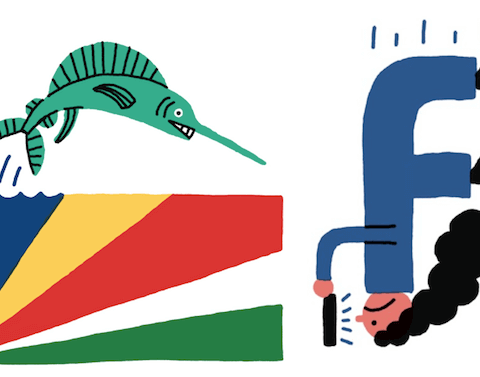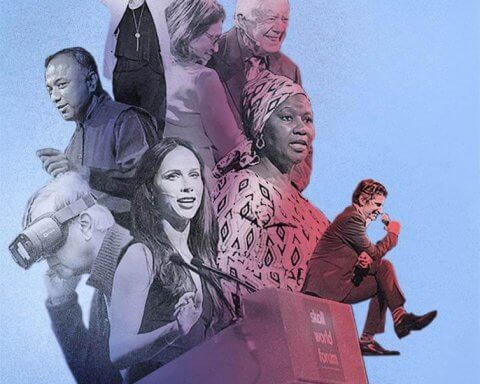Last month, it was reported that a fancy resort in Italy was going to start using drones – officially known as unmanned aerial vehicles – to assist lifeguards. The drones will be set up to spot and deliver lifejackets to swimmers in distress.
Early last week, an intoxicated U.S. intelligence worker mistakenly crashed a drone called a “quad-copter” onto the lawn of the White House. As you might guess, this wasn’t much appreciated by secret service agents.
In the summer of 2013, German law-enforcement officials raided a building of Islamic militants suspected of planning drone attacks. U.S. intelligence officials are increasingly concerned that drones will make it easy for terrorists to launch chemical assaults and surreptitiously scope out sensitive attack sites.
There you have it: the good, the bad and the ugly of low-cost commercial drone technology, which seemingly overnight has become a multibillion-dollar global industry.
Ironically, media organizations reporting on the commercial drone controversy are the same ones eager to embrace these nifty flying machines. This month, the New York Times, Associated Press, Washington Post and seven other major media organizations announced a partnership with Virginia Tech University to study the use of drones to cover breaking news events – a form of what’s known as “drone journalism.”
With some very limited exceptions, flying a drone for commercial purposes is banned in the United States, though regulations are less strict in Canada. Through the Virginia Tech project, participating media outlets hope to convince the U.S. Federal Aviation Administration that they deserve an exemption. CNN is engaged in a similar test initiative in partnership with Georgia Tech Research Institute.
The outcome could be a game changer for journalism, said Jeff Ducharme, a journalism instructor at the College of the North Atlantic in Newfoundland and Labrador. When the U.S. projects were announced, “all the bells went off and everybody started saying, ‘We’ve got to go, we’ve got to get on top of this’,” said Ducharme, who began teaching drone journalism in 2013 as part of his photojournalism class. “The American media outlets are just chomping at the bit to use these things.”
Canadian outlets are just as excited, but they’re being characteristically cautious. At the moment, it appears there are two journalism programs in Canada currently offering drone instruction. The CBC already has a drone team experimenting with the technology, and CTV has been doing its own testing out west, Ducharme said. Colleagues at the Toronto Star and Globe and Mail say they haven’t seen drones used yet, but they figure it’s only a matter of time – and certainly the discussion is happening behind closed doors.
The Canadian government launched a drone safety awareness campaign in October that points to regulations that have been in place since 1996. It’s in the process of updating those regulations given that low-cost drones can be purchased so easily, but for now you only have to get a Special Flight Operations Certificate if the machine being used weighs more than 25 kilograms (or 35 kilograms for recreational users).
Even so, strict rules must be followed – among them, users must be 18 or older, have at least $100,000 in liability insurance, always have the machine within line of sight, and never fly at night or during poor weather. Oh, and no drinking and flying. Break the rules and you can be fined of up to $15,000 and potentially face criminal charges, such as for flying a drone too close to a passenger jet, airport, people or built up areas.
It’s the “people” part, and the interpretation of “built up areas,” that could pose the biggest roadblock to drone journalism in Canada, at least based on current rules. Beyond the occasional train derailment in the middle of nowhere, most news – particularly breaking news – is about people, and tends to happen in built up areas where people are all around.
Good for journalism
There’s no question that a lot of good journalism can result from the assistance of drones in a wide variety of settings that sometimes include people and sometimes don’t. The BBC, for example, posted a haunting video last week of a camera-equipped drone flying over the Auschwitz-Birkenau concentration camp. It offered perspective and insight into a Nazi death camp 70 years after it was liberated by the Soviets, and was a true demonstration of how this low-cost technology can enhance the art of reporting.
How about aerial shots of the Fukushima disaster site, or images in the aftermath of natural disasters or areas battered by war? Traffic reports? Police chases? In terms of sustainability reporting, organizations could use drones to capture industrial impacts on nature or companies trying to evade environmental regulations.
As a story last year in the Columbia Journalism Review illustrates, that’s just the tip of the iceberg.
“The aerial camera could film dramatic footage of a burning oil rig as it sinks into the ocean, then determine the extent of the oil spill by documenting its radius. In a wildfire, a drone could record the valiant efforts of firefighters and, moving faster than the fire itself, scout for survivors trapped in the inferno’s path. Drones could be dispatched on sorties over the arctic, documenting the changing landscape as the ice retreats. They could capture the size of crowds at a protest and the reaction of police—then swoop down for a close up of teargas and flying bricks as the two sides clash.”
During my time as a business reporter at the Toronto Star, there were times when a drone would have come in handy. In 2007, I was dispatched to Deep River, Ontario, where a reactor at the federal government’s Chalk River Nuclear Laboratories was shut down because of safety concerns. This was a big deal, as at the time it supplied more than half of the world’s medical isotopes, meaning a lot of cancer patients were going without diagnostic procedures.
To get a meaningful visual of the heavily guarded facility, we ended up convincing a local pilot to fly us over the laboratory airspace. The photographer I was with got some terrific aerial photographs, but not without a lot of effort and risk, as this was considered a no-fly zone and the weather was less than cooperative.
Three years earlier, I wrote a story about Nortel Networks chief executive Frank Dunn and the $12-million lakeside mansion he was building for himself, at a time when the company was laying off thousands of employees and management was being investigated for alleged accounting improprieties. The Star spent considerable money to rent a small plane so we could get a bird’s eye view of the luxurious property.
Again, it would have been much cheaper and easier to do this with a drone, which could be purchased outright for less than what a one-hour plane rental costs.
Media outfits will argue that using a drone in such situations is no different than hiring a plane, and I would agree to a certain extent. The difference is that planes and helicopters are licensed and must have approval to fly in certain airspace. It’s not easy to fly a plane or copter in Toronto and go unnoticed by the public or authorities. The same can’t be said of a small drone. Drones can also fly much closer to subjects than planes or helicopters, and they can do so in a relatively stealthy fashion.
But safety issues aside, how would anyone who does spot a drone in the sky know if it’s from a media organization or, alternatively, being flown for nefarious purposes or to enable acts of terrorism? In the event of breaking news that would normally attract dozens of reporters, could we potentially end up with dozens of drones flying in a relatively confined airspace with no clue of who is operating them – no direct line of accountability?
“It’s only responsible for us to ask these questions,” said Ducharme, who’s not opposed to the idea of having media outlets or individual journalists be licensed to operate the machines. Indeed, Transport Canada has toyed with the idea.
In Ontario, an adult can’t go recreational fishing without a license, or operate a small motorboat without having it registered with a license number affixed on its side. Why not do the same for journalists and other commercial users of drones?
Another potential measure: require manufacturers to build radio-frequency ID chips into drones that would tie the machine to the owner with a simple laser scan. “That way, if you do something stupid, at least (authorities) could track you down,” Ducharme said. For the purposes of journalism, tethered drones are another option. These machines would be literally tied to the person flying it, allowing for easier control and identification.
Privacy elephant
But what about the elephant in the newsroom: privacy? As the CRJ story also points out, drones “could be used in more unsettling ways,” for example, “to trail a politician suspected of wrongdoing… even if it means positioning the camera to capture footage in a private home.” (For a general look at privacy concerns as they relate to drones, Canada’s privacy commissioner put out this informative report in 2013).
As a career journalist, I obviously consider freedom of the press a good thing. But within the journalism profession – particularly in Canada – there are unwritten and sometimes written codes of conduct that attempt at finding a fair balance between the public’s right to know and an individual’s right to personal privacy. Even before drones came on the scene, media organizations have struggled with that balance.
A photojournalist, for example, can sit in a car parked in a public place and still use a telephoto lens to capture footage in a private home. But drones allow for more than a curbside perspective. They can fly above a private backyard and peer into all windows of a house from any angle. Is the airspace over private property also private?
Consider that these machines are only going to shrink in size. For less than $300 a person can already purchase the Estes Proto-X FPV, a drone quad-copter that fits in the palm of your hand and has a built-in HD video camera that can capture footage up to 75 meters away. Soldiers are already using these tiny flyers in the battlefield for reconnaissance purposes.
Ducharme agreed there’s a slippery slope when it comes to drones and privacy, but he said the concerns are also overblown – at least for the time being. “You’re going to hear them, and going to see them, as they have powerful LEDs on them that are needed for navigation,” he explained. “So they’re not as clandestine as people might fear.”
Plus, he added, “To really know who you are, it has to be close enough to you that you’d be able to knock it out of the air with a broomstick.” The technology will continue to improve, of course, but aren’t we as a society already dealing with these kinds of privacy issues when it comes to smart phones and closed-circuit cameras on street poles?
That said, as commercial drone technology evolves so, too, should a code of conduct for media organizations choosing to embrace this next phase of professional reporting. Ducharme has already drafted a drone journalism code of conduct, which he considers a work in progress.
“People are concerned these drones are going to be flying through neighborhoods looking for stories,” he said. “One of the codes we have is that drones should not be used to search for stories. You don’t just launch one and fly it around town looking for that fire or car accident, it has to be used purposely.”
In the meantime, you can bet law-enforcement agencies will have their own tricks to managing drone proliferation. They are already using detection systems and signal jammers to prevent drones from being used to deliver weapons and drugs into prison compounds.
Some drones already have no-fly zones, such as for major airports, built into their firmware. DJI, the world’s leading drone maker, announced recently a mandatory software update to their drones that will include a no-fly restriction for Washington, D.C.
“I would expect other manufacturers to follow,” Ducharme said. “If you fly into these zones, the craft will automatically shut down and land.” The day may come when law-enforcement officials will have override “keys” that can force all commercial drones within a designated area to land safely.
Another alternative: train hawks and falcons to attack and destroy.
The point, Ducharme added, is that as drone technology evolves so will technologies to address the new privacy, safety and security concerns they introduce. Not that this should absolve media organizations from operating these devices responsibility and for taking a hard line on rogue journalists that cross the line.
“We have to prove beyond a shadow of a doubt to the public and to the regulators that we can operate these craft in a safe and responsible manner,” he said. “The more we can prove that to them the farther ahead we can advance this technology.”









